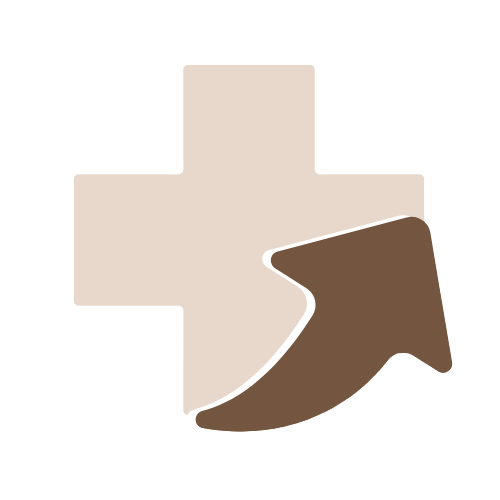Hirsutism
Overview
Hirsutism is a condition characterized by excessive, coarse, and dark hair growth in women in areas where hair is normally minimal or absent, such as the face, chest, back, and abdomen. This hair growth follows a male-pattern distribution and is often a result of an excess of androgens (male hormones) or an increased sensitivity of hair follicles to androgens. Hirsutism is not a disease by itself but a symptom of an underlying hormonal imbalance. It can significantly impact a woman’s self-esteem and quality of life, although in many cases, it is manageable with medical and cosmetic treatments.
Causes
Hirsutism is typically caused by hormonal imbalances or conditions that increase androgen levels or activity. Common causes include:
- Polycystic Ovary Syndrome (PCOS): The most common cause of hirsutism, characterized by irregular menstrual cycles, ovarian cysts, and elevated androgen levels.
- Idiopathic Hirsutism: In some women, no specific cause is found, but they may have heightened skin sensitivity to normal androgen levels.
- Congenital Adrenal Hyperplasia (CAH): A group of genetic disorders affecting adrenal hormone production, leading to excess androgen production.
- Cushing’s Syndrome: Excess cortisol production from adrenal glands, often accompanied by elevated androgen levels.
- Androgen-Secreting Tumors: Rare tumors of the ovaries or adrenal glands can cause a sudden onset of hirsutism and rapid progression.
- Medications: Drugs such as anabolic steroids, danazol, minoxidil, and certain progestins can trigger or worsen hirsutism.
- Insulin Resistance: High insulin levels, often seen in PCOS, can stimulate the ovaries to produce more androgens.
Symptoms
The primary symptom of hirsutism is the excessive growth of thick, dark hair in areas typically associated with male hair distribution. Additional symptoms may vary depending on the underlying cause:
- Facial Hair Growth: On the upper lip, chin, sideburns, and cheeks.
- Hair on the Chest and Abdomen: Midline hair growth on the chest or a line of hair from the belly button downward.
- Back and Thigh Hair: Increased hair on the lower back, buttocks, or inner thighs.
- Menstrual Irregularities: Irregular or absent periods, especially in PCOS.
- Acne and Oily Skin: Common in women with elevated androgen levels.
- Deepened Voice: A rare but concerning sign of significantly high androgen levels.
- Increased Muscle Mass and Clitoral Enlargement: Seen in severe cases, often indicating a tumor or significant hormone imbalance.
Diagnosis
Diagnosis of hirsutism involves evaluating medical history, physical examination, and laboratory tests to identify the underlying cause and rule out serious conditions.
- Medical History: Assessment of hair growth patterns, menstrual history, family history, and onset of symptoms.
- Physical Examination: Evaluation of hair distribution, severity of hirsutism, and presence of acne, obesity, or other signs of hormonal imbalance.
- Ferriman-Gallwey Score: A scoring system used to quantify the extent of hair growth in different body regions.
- Blood Tests: To measure levels of total and free testosterone, dehydroepiandrosterone sulfate (DHEAS), luteinizing hormone (LH), follicle-stimulating hormone (FSH), and cortisol.
- Pelvic Ultrasound: Used to check for polycystic ovaries in suspected PCOS cases.
- Adrenal Imaging (CT or MRI): May be necessary if an adrenal tumor is suspected due to rapidly progressing hirsutism or very high androgen levels.
Treatment
Treatment for hirsutism depends on its cause, severity, and the patient’s preference. The goal is to reduce hair growth, normalize hormone levels, and address cosmetic concerns.
Medical Treatments
- Oral Contraceptive Pills (OCPs): Often the first-line treatment for hirsutism, OCPs lower androgen production and regulate menstrual cycles.
- Anti-Androgens: Medications such as spironolactone, flutamide, or finasteride block androgen receptors and reduce hair growth.
- Insulin-Sensitizing Agents: Metformin may be used in women with PCOS and insulin resistance to improve hormonal balance.
- Glucocorticoids: Low-dose corticosteroids are used in cases of adrenal hyperplasia to suppress excess androgen production.
- Gonadotropin-Releasing Hormone (GnRH) Agonists: Used rarely in severe cases to suppress ovarian hormone production.
Cosmetic Treatments
- Hair Removal Techniques: Shaving, waxing, plucking, and depilatory creams offer temporary hair removal.
- Laser Hair Removal: A long-term option that reduces hair growth by damaging hair follicles with laser energy.
- Electrolysis: A permanent hair removal method using electric current to destroy hair follicles.
- Eflornithine Cream: A topical medication that slows facial hair growth in women.
Lifestyle Modifications
- Weight loss through diet and exercise can help reduce androgen levels in overweight women with PCOS, improving hirsutism symptoms.
Prognosis
The prognosis for hirsutism is generally good, especially when the underlying cause is identified and properly managed. Many women experience significant improvement in hair growth with a combination of medical and cosmetic treatments. In cases where hirsutism is caused by PCOS, long-term hormonal management can effectively control symptoms.
However, some cases may require ongoing treatment since hair follicles that have already been activated by androgens may not fully revert to their original state. Cosmetic treatments can provide satisfactory control of hair growth. Early diagnosis and treatment can prevent worsening of symptoms and help improve self-esteem and quality of life. Regular monitoring by healthcare professionals ensures the most effective management strategy for each individual.
